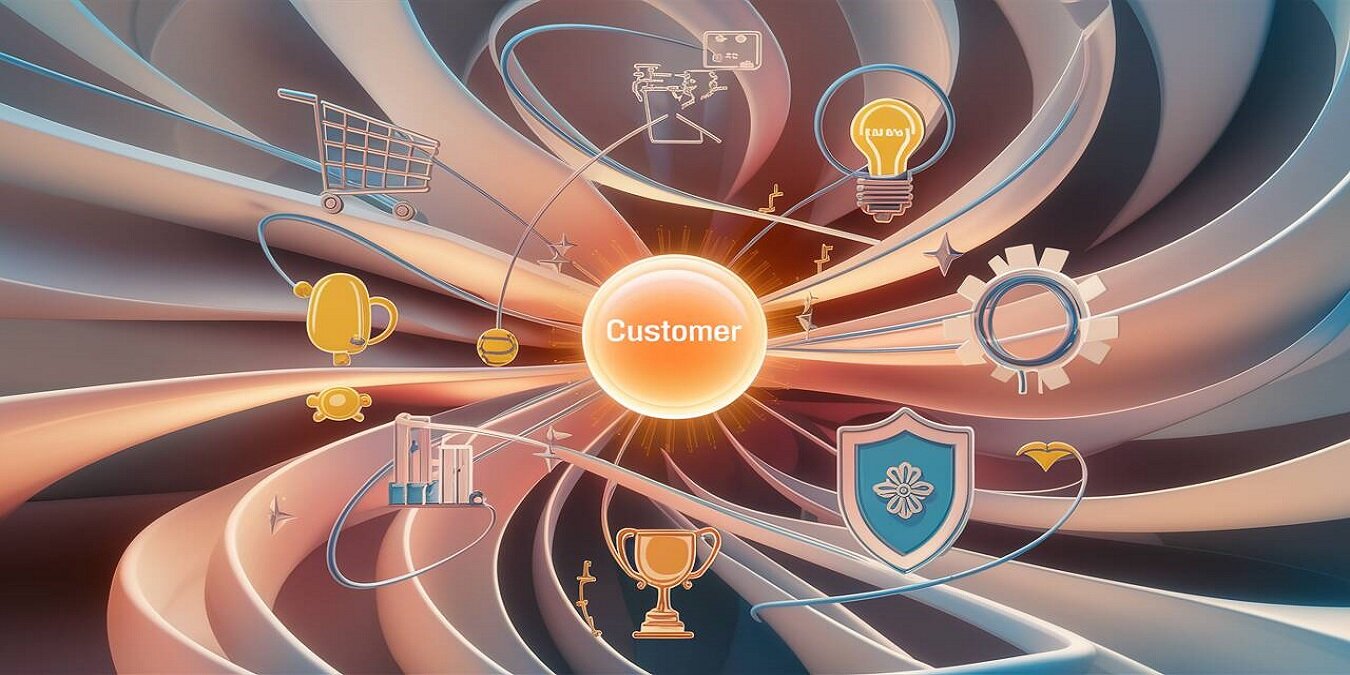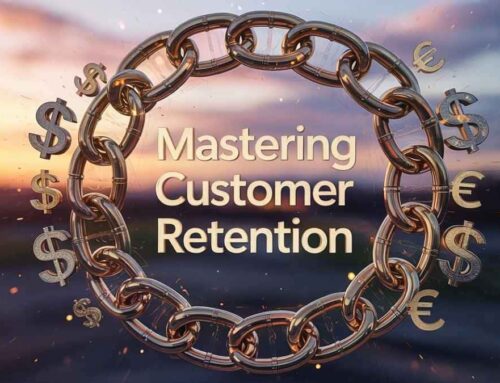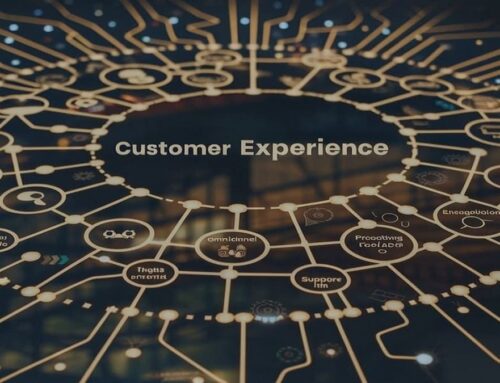
Customer Obsession
In today’s fast-paced, hyper-competitive business environment, the term “Customer Obsession” has become more than just a buzzword – it’s a critical driver of enduring business success.
While many companies pay lip service to the idea of putting customers first, truly customer-obsessed businesses take this commitment to a whole new level. They don’t just focus on customer satisfaction; they make their customers the central axis around which every decision, strategy and action revolves.
But what does it really mean to be customer-obsessed and how can businesses implement this approach to ensure long-term success?
In this article, we’ll explore the concept of customer obsession, the benefits it brings and the strategies companies can use to embed this philosophy deeply into their culture and operations.
What Is Customer Obsession?
Customer obsession is a mindset and approach where every aspect of a business is centered on delivering exceptional value to customers. It’s more than just providing good customer service or aiming for high customer satisfaction scores.
It’s about deeply understanding your customers’ needs, desires and pain points and relentlessly pursuing ways to exceed their expectations.
Unlike traditional customer-focused strategies, which often prioritize profit margins or market share, customer obsession places the customer’s experience at the forefront of all business decisions.
It requires companies to anticipate customer needs, innovate based on customer feedback and continually evolve to meet changing expectations.
The Difference Between Customer Focus and Customer Obsession
While customer focus and customer obsession might sound similar, there are key differences between the two.
- Customer Focus: A customer-focused company aims to meet customer needs and provide good service. These companies typically respond to customer feedback and strive to improve customer satisfaction.
- Customer Obsession: A customer-obsessed company goes beyond merely responding to customer needs. It proactively seeks out new ways to delight customers, often anticipating their needs before they even arise. Every decision, from product development to marketing, is made with the customer at the center.
In a customer-focused company, the customer is important. In a customer-obsessed company, the customer is everything.
The Business Case for Customer Obsession
Adopting a customer-obsessed approach isn’t just good ethics – it’s good business. Here are some compelling reasons why customer obsession leads to enduring success:
-
Increased Customer Loyalty and Retention
Customer loyalty is the holy grail for many businesses. A loyal customer base not only provides a steady revenue stream but also acts as a powerful marketing tool through word-of-mouth referrals.
Customer-obsessed companies excel in building and maintaining strong customer relationships, leading to higher retention rates.
When customers feel truly valued and understood, they’re more likely to remain loyal, even in the face of competitive offers.
They trust that the company will continue to meet their needs and deliver consistent value, making them less likely to switch to a competitor.
-
Higher Customer Lifetime Value (CLV)
Customer Lifetime Value (CLV) is a crucial metric that represents the total revenue a business can expect from a single customer over the course of their relationship.
Customer-obsessed companies tend to have higher CLV because their customers are more satisfied, stay longer and often spend more over time.
By focusing on delivering exceptional value and creating positive experiences, these companies can increase the frequency and size of purchases, cross-sell and up-sell effectively and reduce churn, all of which contribute to a higher CLV.
-
Sustainable Competitive Advantage
In markets where products and services are becoming increasingly commoditized, customer obsession can serve as a powerful differentiator. When a company is known for going above and beyond for its customers, it stands out from the competition.
This reputation can be difficult for competitors to replicate, providing a sustainable competitive advantage.
Moreover, customer-obsessed companies are often more innovative because they are constantly looking for new ways to solve customer problems. This innovation leads to better products and services, further solidifying their market position.
-
Positive Brand Reputation
A customer-obsessed approach fosters positive word-of-mouth and strong brand advocacy. When customers have exceptional experiences, they’re more likely to share those experiences with others, both online and offline.
This organic promotion can be more powerful than any marketing campaign, as it builds trust and credibility.
Over time, a company known for its customer obsession can develop a reputation as a brand that truly cares about its customers, which can attract new customers and enhance overall brand equity.
-
Resilience in Economic Downturns
During economic downturns, customers become more discerning about where they spend their money. Companies that have built strong, trust-based relationships with their customers are more likely to retain their business during tough times.
A customer-obsessed approach ensures that customers feel valued and supported, making them less likely to abandon the brand when budgets are tight.
How to Build a Customer-Obsessed Culture
Creating a customer-obsessed culture doesn’t happen overnight. It requires a deep commitment from leadership, a willingness to make sometimes difficult trade-offs and the integration of customer-centric principles into every aspect of the business.
Here are some strategies to help build and sustain a customer-obsessed culture.
-
Start with Leadership Commitment
Customer obsession must start at the top. Leadership needs to model customer-centric behavior and make it clear that the customer is the priority in all decision-making processes.
This commitment should be communicated consistently throughout the organization, with leaders setting the tone for how customer interactions are handled and how customer feedback is valued.
Leaders should also be accessible and actively engage with customers. This might mean participating in customer support, attending focus groups or regularly reviewing customer feedback.
When employees see leaders prioritizing customers, they’re more likely to follow suit.
-
Embed Customer-Centric Values into the Company Culture
For customer obsession to take root, it needs to be a core part of the company’s values and culture.
This means going beyond mission statements and slogans – customer-centric values need to be reflected in everyday actions, decisions and interactions.
Consider incorporating customer-centric metrics into employee performance evaluations, recognizing and rewarding employees who go above and beyond for customers and ensuring that all team members understand how their roles contribute to the overall customer experience.
-
Hire and Train for Customer Obsession
Building a customer-obsessed team starts with hiring. Look for candidates who demonstrate empathy, strong communication skills and a passion for helping others.
During the interview process, ask candidates about their experience in customer-facing roles and how they’ve gone above and beyond to meet customer needs.
Once onboard, provide ongoing training that emphasizes the importance of customer obsession.
This training should cover not only customer service best practices but also the company’s specific approach to delivering exceptional customer experiences.
-
Prioritize Customer Feedback
Customer feedback is a goldmine of insights that can help drive improvements and innovation.
Customer-obsessed companies actively seek out feedback through surveys, focus groups, social media and direct interactions. But more importantly, they act on this feedback quickly and visibly.
Establish a system for collecting, analyzing and responding to customer feedback. Ensure that feedback loops are short, so customers see that their input is valued and leads to real change.
Share feedback and the actions taken in response with the entire organization to reinforce the importance of listening to customers.
-
Empower Employees to Make Customer-Centric Decisions
In a customer-obsessed company, employees at all levels should feel empowered to make decisions that benefit the customer.
This might mean giving front-line employees the autonomy to solve customer problems without needing to escalate them or encouraging team members to take initiative in finding new ways to delight customers.
Empowerment requires trust, training and clear guidelines. Employees should understand the company’s customer-centric goals and have the resources they need to achieve them.
When employees are empowered to act in the customer’s best interest, it leads to faster resolutions, higher customer satisfaction and a more motivated workforce.
-
Leverage Data to Anticipate Customer Needs
Customer obsession involves not only responding to customer needs but anticipating them. By leveraging data analytics, companies can gain deeper insights into customer behavior, preferences and pain points.
This allows them to predict trends, identify potential issues before they arise and offer personalized solutions that resonate with customers.
Invest in the tools and technologies needed to collect and analyze customer data. Use this data to create detailed customer personas, map out customer journeys and identify opportunities for proactive engagement.
The goal is to stay one step ahead, delivering value before the customer even asks for it.
-
Innovate with the Customer in Mind
Innovation is a key component of customer obsession. Customer-obsessed companies don’t just improve existing products and services – they continuously seek out new ways to solve customer problems and enhance the customer experience.
Encourage a culture of innovation by involving customers in the development process. Use customer feedback to identify pain points and brainstorm solutions. Pilot new ideas with select customer groups and iterate based on their input.
By making customers partners in the innovation process, you not only create better products but also build deeper customer loyalty.
Real-World Examples of Customer Obsession
To see the power of customer obsession in action, let’s look at some real-world examples of companies that have successfully adopted this approach.
-
Amazon
Amazon is perhaps the most well-known example of a customer-obsessed company. Jeff Bezos, the founder of Amazon, famously said, “We’re not competitor-obsessed, we’re customer-obsessed. We start with what the customer needs and we work backwards.”
This philosophy has been the driving force behind Amazon’s incredible growth and success.
From the very beginning, Amazon has focused on making the customer experience as seamless and convenient as possible. Whether it’s through one-click ordering, fast and reliable shipping or a customer service team that goes above and beyond, every aspect of Amazon’s business is designed with the customer in mind.
This relentless focus on the customer has allowed Amazon to build a loyal customer base and dominate the e-commerce industry.
-
Zappos
Zappos, the online shoe and clothing retailer, is another prime example of customer obsession. The company’s commitment to customer satisfaction is legendary, with a customer service team that is empowered to go to extraordinary lengths to make customers happy.
Zappos’ customer obsession extends to its company culture, where employees are trained to prioritize customer needs and are encouraged to “Wow” customers with exceptional service.
This approach has not only driven customer loyalty but also made Zappos a beloved brand with a strong reputation for caring about its customers.
-
Ritz-Carlton
The Ritz-Carlton hotel chain is renowned for its exceptional customer service and attention to detail. The company’s motto, “We are Ladies and Gentlemen serving Ladies and Gentlemen,” reflects its commitment to treating every guest with the utmost respect and care.
At Ritz-Carlton, employees are empowered to spend up to $2,000 to resolve any guest issue without needing managerial approval. This level of autonomy allows employees to quickly and effectively address customer concerns, ensuring that guests have a memorable and positive experience.
Ritz-Carlton’s customer obsession has helped it maintain a reputation as one of the world’s leading luxury hotel brands.
Challenges of Implementing Customer Obsession
While the benefits of customer obsession are clear, implementing this approach is not without its challenges. Here are some common obstacles companies may face:
-
Balancing Short-Term Profit with Long-Term Customer Value
One of the biggest challenges of customer obsession is balancing the desire to deliver exceptional customer experiences with the need to achieve short-term financial goals. Sometimes, investing in customer satisfaction can require upfront costs that may not yield immediate returns.
However, it’s important to remember that the long-term benefits of customer loyalty and retention often outweigh the short-term costs.
-
Maintaining Consistency Across Channels
In today’s omnichannel world, customers interact with brands across multiple touchpoints, from online shopping to social media to in-store experiences. Ensuring a consistent, high-quality experience across all channels can be challenging, but it’s crucial for maintaining customer trust and satisfaction.
-
Scaling Customer Obsession
As companies grow, maintaining a customer-obsessed culture can become more difficult. Larger organizations may struggle to maintain the same level of personalization and attention to detail that smaller companies can provide.
However, by leveraging technology, empowering employees and staying true to the company’s customer-centric values, it’s possible to scale customer obsession without losing its essence.
Conclusion
Customer obsession is not just a strategy – it’s a philosophy that can drive enduring business success. By placing the customer at the center of everything they do, companies can build strong, loyal relationships, differentiate themselves from the competition and achieve sustainable growth.
While the journey to becoming truly customer-obsessed can be challenging, the rewards are well worth the effort. Businesses that embrace customer obsession will not only thrive in the present but also secure their place in the future, no matter how the market evolves.














